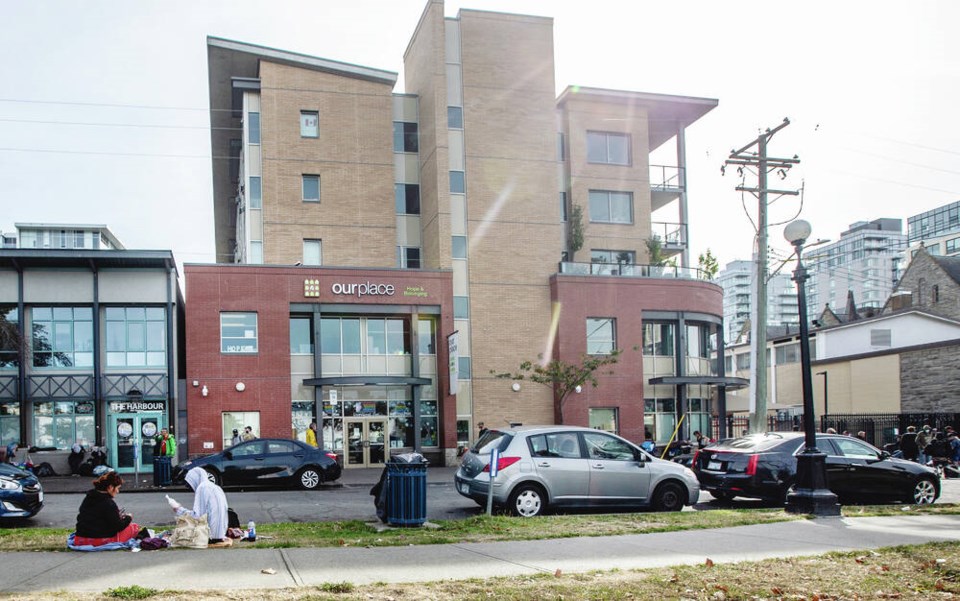While drug users in downtown Victoria welcomed changes Tuesday allowing them to carry up to 2.5 grams of drugs such as heroin, fentanyl, cocaine and methamphetamine for personal use, the City of Campbell River is bringing in a bylaw to ban consumption of controlled substances on municipal property.
The ban would cover roads, city facilities, parks or other public spaces. The penalty is $200.
Coun. Ben Lanyon, who moved a motion in favour of the bylaw at a Jan. 26 council meeting, called it “the most prudent [way] to protect all of our community.”
Coun. Sean Smyth said it’s council’s responsibility “to look after the social, financial impacts of every individual in Campbell River and I think this helps.”
But Coun. Tanille Johnston, the only council member opposed to the bylaw, took issue with the notion that residents are concerned about drug use in the city centre that could be compounded by the three-year drug decriminalization project that started in B.C. on Tuesday.
Johnston pointed to a Vital Signs survey that found the majority of residents are not concerned about going downtown. She said the municipality is making its decision in the absence of information, and needs to consult the chief medical health officer and B.C. Centre for Disease Control and Prevention.
Nonetheless, the bylaw passed third reading and now awaits final adoption.
“I think if it turns out that evidence comes in later that contradicts this we can remove it,” Lanyon said.
In Victoria, a drug user in the 900-block of Pandora on Tuesday called the decriminalization trial a step in the right direction, although he said it should go hand in hand with better and more support services, such as additional injection sites and a place for users to spend time. He said he favours a clean, safe supply so users know what’s in the drugs they buy. Otherwise, it’s like playing “Russian roulette,” he said.
Simply allowing people to carry 2.5 grams of a controlled substance without backup services is “like building a whole bunch of high-rise apartments in an area where you haven’t already built the infrastructure to handle the extra traffic and things like that,” he said.
If users are allowed to carry drugs in their pockets, the question is: “Where do we get them?” he said, adding the government should listen to drug users’ experiences as part of the decision-making process.
Dean Wilson, who started working as a peer facilitator at the B.C. Centre on Substance Use in 2017 as a heroin user, said decriminalization needs to be accompanied by a bold plan to provide more people with a broad range of safer alternatives to toxic street drugs, which profiteers often cut or contaminate with the powerful opioid fentanyl.
“They’ll cut their cocaine for five minutes, then they’ll cut their fentanyl on the same scale and all of a sudden there’s fentanyl on the cocaine. And when somebody who’s never done opioids at all gets the one [hit] that had a little bit of fentanyl, they’re dead,” Wilson said.
A regulated supply of pharmaceutical alternatives should be available through multiple routes, including compassion clubs, he said. “There’s nothing out there that’s safe unless you test your dope every time. And you can’t do that if you’re an active addict.”
Back on Pandora Avenue, a user inside the SOLID Outreach Society’s consumption site predicted the decriminalization experiment will reduce crime rates because drug users will have the security of having several days’ supply on hand. A user will typically buy one dose of fentanyl at a time for $20, she said. But if someone can buy one gram for $70 or $80 and carry it, that translates into eight to 10 doses, which means a lower per-dose price tag.
It also could mean “they won’t have to do the crime to get the drugs they need to stay well,” she said.
Before Tuesday, people were afraid to buy a gram in case they were stopped by police and the drug would be confiscated, she said. She called the new carrying limit a “good thing.” “Basically everybody’s pretty onboard with it.”
Now 56, the woman said she has been using drugs since she was 13, with a couple of breaks. She uses about half a gram of fentanyl per day, split into four or five doses.
She has experienced a few overdoses and survived thanks to others nearby who administered Narcan, an opioid overdose treatment.
“We didn’t sign out to be drug addicts. We have become drug addicts. And now let’s deal with it in a way that is do-able, you know?”
Ann Livingston, a volunteer at the Nanaimo Area Network of Drug Users, said allowing users to carry 2.5 grams does not make a lot of sense without some kind of reliable, safe supply and support services.
“I don’t know how they are going to measure the success of that.”
NANDU operates a peer-supervised consumption service in a tent on 264 Nicol St., which Livingston said attracts about 200 users daily. The city has declared it a nuisance and so far it has received and paid two fines, Livingston said.
Livingston said drug users have had little reaction to the decriminalization trial so far. “I think they are just puzzled by it.”
>>> To comment on this article, write a letter to the editor: [email protected]



